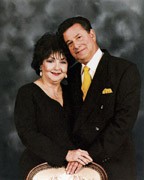The Dr. George and Vivian Dean Collection of over 1,000 rare historical chess sets is the result of years of devoted world-wide travel, study, and erudition.
Chess Masterpieces: Highlights from the Dr. George and Vivian Dean Collection celebrates the Deans’ 50th year of collecting together and uses outstanding selected works to trace the development of the game of chess and the design of fine chess sets from the tenth to the early twentieth century. Sets come from Austria, Cambodia, China, England, France, Germany, India, Italy, Japan, Kashmir, Morocco, Persia, Russia, Syria, and Turkey. Among the works on display are ones owned or commissioned by Catherine the Great, Napoleon, Czar Nicolas II, and the British royal family.
Chess has been called “The Royal Game” not only because it originated in such royal courts but also because, across all eras and cultures, chess sets have been created from gold, silver, ivory, gemstones, crystal, and other opulent materials by the world’s finest craftsmen.
The world-renowned Fabergé, Meissen, and Wedgewood workshops and many others were eager to join ranks with generations of elite anonymous craftsmen who worked for their ruler, church, or wealthy civil patrons to craft chess sets recognized as consummate works of art.
Just as the world’s finest craftsmen devised ever-more ingenious chess set designs, chess players plotted and planned ever-more innovative and elegant styles of play. Hence, each chess set in this exhibition is shown in a famous middle game or problem position from approximately the same timeframe and locale as the set. This enables one to view the pieces as they were intended to be viewed—in play, with the visual beauties of the designs complimented by the strategic brilliancies of the games. Hopefully, looking at pieces in the middle of a period game will bring one a step closer to the original experience of both the chess set and chess play of the time. These games were researched by curator Larry List with the help of chess scholar Myron Samsin of the Ken Whyld Association and noted chess teacher and author, Fred Wilson.
It is said that there are currently 500,000,000 chess players in the world and that there are more potential chess moves than there are atoms in the universe. These highlights from the Dean Collection suggest that there are as well an infinite variety and possibilities in the design of chess sets to study, learn from, and enjoy.
On View: September 9, 2011 – February 12, 2012
Dr. George and Vivian Dean
This exhibition commemorates the 50th year that Dr. George and Vivian Dean have been collecting chess sets together. They purchased their first chess set in the Middle East and thereafter acquired a set in each country they visited. As they studied chess history, they expanded their collection more systematically. Now they travel to new countries for the sole purpose of acquiring new sets to make their collection more complete. Their collection includes over 1,000 chess sets and related objects from over 100 countries. The Deans have shared their collection with the public for study, research, and education. Pieces from the collection have been shown at The Royal Academy of Art and The Somerset House, London; the Musée d’Orsay and Bibliothèque Nationale, Paris; The Maryhill Museum of Art; The Philadelphia Museum of Art; The 1990 Kasparov vs. Karpov World Chess Championship at Hotel Macklowe, New York City; and The Detroit Institute of Art. Chess Masterpieces: One Thousand Years of Extraordinary Chess Sets, (Abrams) by George Dean with Maxine Brady has received The 2011 Cramer Award for Excellence in Chess Journalism.
Chess Masterpieces: Highlights from the Dr. George and Vivian Dean Collection is curated by Larry List. For many years independent curator Larry List has researched the intersections between chess-play, chess set design, and their rich interrelations with visual arts and music. He organized The Imagery of Chess Revisited exhibition and book for the Noguchi Museum, New York, and the Menil Collection, Houston. He has researched and replicated estate-authorized versions of lost chess sets, art works & models by Isamu Noguchi, Yves Tanguy, Andre Breton, Xanti Schawinsky, Xenia Cage, and Man Ray. List co-curated 32 Pieces: The Art of Chess, for the Reykjavik Art Museum and DOX Center for Art, Prague and contributed the major essay, “New Forms for a New Era,” to the catalogue. He contributed the essay “Chess As Art” to the catalogue of the Duchamp/Man Ray/Picabia exhibition at The Tate Modern, London and an essay on the chess-related performance work of Glenn Kaino for The Warhol Museum’s exhibition catalogue, Transformer: The Work of Glenn Kaino.
Generous support for Chess Masterpieces: Highlights from the Dr. George and Vivian Dean Collection was provided by Dr. Jeanne and Rex Sinquefield.
Special thanks to Dr. George and Vivian Dean; Terry Birkett; Davin Brainard and Amy Foley of the Detroit Institute of Art; Myron Samsin of the Ken Whyld Association; Floyd and Bernice Sarisohn of Chess Collectors International; and Fred Wilson of Fred Wilson Chess Books. NY.
Images: ©Dean Collection 2010, Richard Beenen Photography.
Press
12/7/11: ArtDaily.org — World Chess Hall of Fame presents Highlights from the Dr. George and Vivian Dean Collection
11/9/11: ChessBase News — World Chess Hall of Fame opens in St. Louis
11/5/11: The Telegraph, Alton, IL — World Chess Hall of Fame Moves to St. Louis
10/4/11: Susan Polgar — Inaugural Lecture at World Chess Hall of Fame
9/12/11: STL Beacon — Chess Hall of Fame Plans New Strategy with Opening in St. Louis
9/9/11: St. Louis Magazine — Best Chess in the West: Rex Sinquefield’s World Chess Hall of Fame Opens in CWE
9/9/11: ChessBlog.com — World Chess Hall of Fame Opens in Saint Louis
7/31/11: ChessBlog.com — World Chess Hall of Fame to Open in September
2011: The Chess Collector. Vol. XX No. 3 — 7th Western Hemisphere Meeting of Chess Collectors International in St. Louis, Missouri, USA, September, 9-11, 2011

